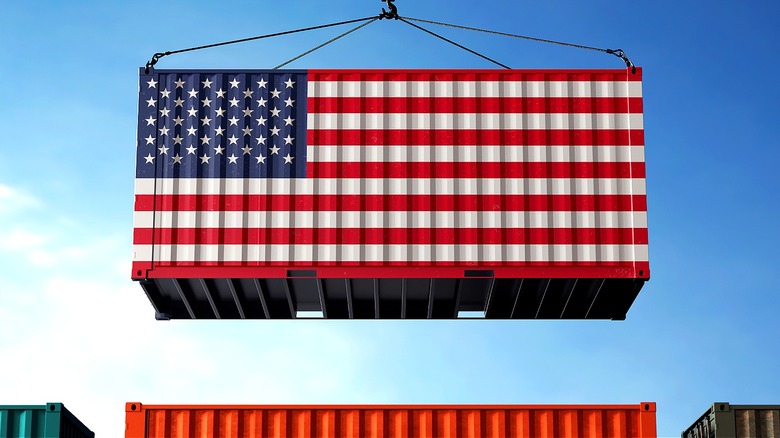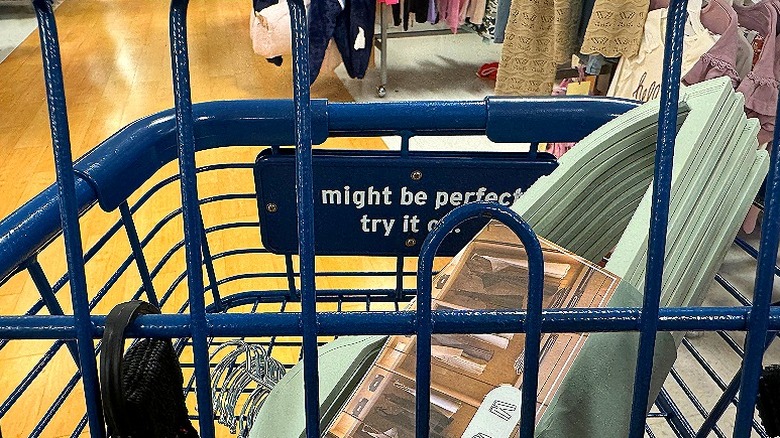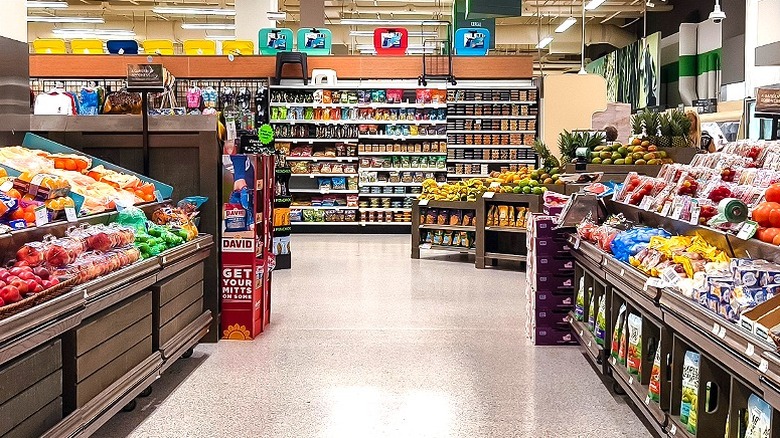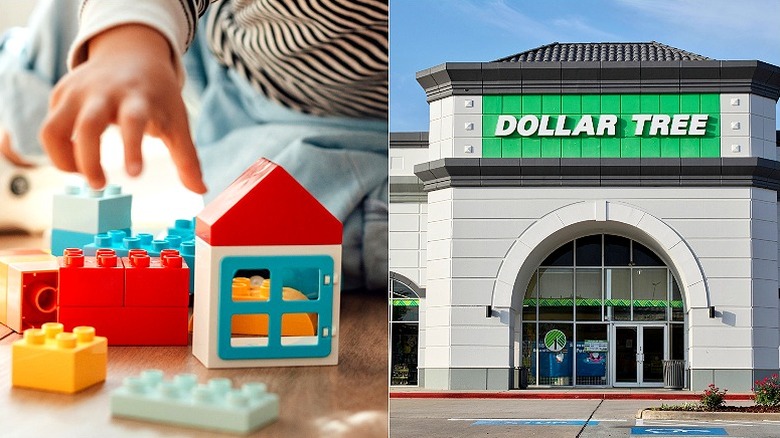5 Ways New Tariffs Will Impact Your Family's Budget
Throughout his 2025 presidential campaign, President-elect Donald Trump promised to impose stiff tariffs on foreign imports to the United States. His proposals include a 10%-20% tariff on all foreign imports, a 60% tariff on imports from China, and a 25%-100% tariff on Mexican imports. "Tariffs are the greatest thing ever invented,” Trump said on the campaign trail; in fact, tariffs are such a key aspect of Trump's agenda that he refers to himself as "Tariff Man." But what are tariffs, and how will they impact your family's budget?
Tariffs are import taxes. U.S. businesses are charged extra fees for importing foreign goods and materials. That higher cost is reflected in higher prices to final customers. The idea behind levying tariffs is to regulate foreign trade, boost domestic manufacturing, and keep domestic prices competitive in a global market. (Read our detailed explainer on what tariffs are and who pays for them here.)
While Trump's first-term tariffs were largely kept in place by the Biden-Harris administration, his extreme tariff proposals for his second term have economists and business leaders sounding the alarm. Even "Shark Tank" investment guru Mark Cuban is a vocal critic of Trump's tariff policy. This is because, while tariffs are a protectionist move, they come at a considerable cost for domestic and global economies. Tariffs can lead to inflation, trade retaliation, trade wars, supply chain problems, economic depression, and an overall increase in prices for business owners and consumers alike.
Higher prices across the retail sector
The U.S. imports an estimated $1 trillion worth of goods more than it exports. This means almost all industries will likely be affected by tariffs, and consequently many goods will increase in price. Left- and right-leaning groups estimate these new tariffs will cost the average American family around an additional $4,000 per year, while the Peterson Institute for International Economics estimates the additional per-household amount at over $2,600.
"If we get tariffs, we will pass those tariff costs back to the consumer," said AutoZone CEO Philip Daniele on a September earnings call (via Forbes.) Similar statements have been made by the CEOs of appliance company Stanley Black & Decker, as well as Columbia Sportswear. Appliance costs may rise as high as 31%, which is representative of increases across industries, according to the National Trade Federation. Tim Boyle, Columbia's CEO, warned The Washington Post: "It's going to be very, very difficult to keep products affordable for Americans."
Cheap prices rely on inexpensive labor and materials, both of which are often outsourced to other countries. Tariffs may initially prove attractive to domestic leaders because judicious implementation could stop some of that outsourcing, in theory. In practice, moving manufacturing back to the U.S. is a long-term, expensive investment not all business leaders are willing to reshore for. Nor are U.S.-made products always affordable for small business owners. The United States won't always be the first choice for manufacturing, either. Some companies may move production out of China to less-heavily taxed Mexico.
Food prices at the store may spike
Frugal shoppers cultivate grocery strategies to save money, but soon they may have to get even more creative. As reported by the FDA, 15% of the United States food supply is imported. Donald Trump's proposed tariffs aim to change that amount, which will in turn adjust the price and availability of groceries.
"We allow a lot of farm product into our country," said Trump in a Michigan town hall during his recent campaign (via New York Magazine). "[W]e're not going to allow so much — we're gonna let our farmers go to work." One such product is garlic. As reported by Forbes, China is responsible for about 80% of the world's garlic supply, which includes much of the U.S. While California is the country's largest producer of garlic, only two chains — Costco and Trader Joe's — exclusively source their garlic from the Golden State. A 60% tariff on Chinese garlic imported to the U.S. would likely be reflected in the price of any U.S.-sold products using garlic as an ingredient, from frozen pizzas to seasoning packets and everything in between.
While the idea behind tariffs is to increase domestic production rather than reliance on imported goods, domestic farms may struggle to meet increased demand, especially partnered with loss of a migrant workforce. Food prices may spike, while foreign suppliers may respond to the tariffs with their own tariffs, or decreasing reliance on U.S. goods, contributing to a vicious, costly cycle of inflation, trade retaliation, domestic hardship, and geopolitical tension.
Furniture and fashion are expected to cost more
Some industries are more import-heavy than others. One such industry is the furniture industry, and products sold stateside will likely see major price hikes if the tariffs go through. For example, as reported by Reuters, budget-friendly furniture retailer IKEA only makes 10% of its products in the United States, meaning 90% of its products and materials could face tariffs under the new administration. According to a November 2024 study by the National Retail Federation (NRF) on the impact of proposed tariffs on imports, Americans as a whole could potentially pay $8.5 billion to $13.1 billion more on furniture.
The fashion industry, as well, often reliant on inexpensive materials from China, may adjust prices, shutter brands, or source fabrics from other more affordable countries like Nepal or Vietnam in response to tariffs. Per NRF's study, apparel costs would rise from $13.9 billion to $24 billion and footwear costs from $6.4 billion to $10.7 billion under the proposed tariffs. For a more digestible number, add 25% to any of your usual clothing or footwear purchases to see the likely effect. Increased clothing and furniture prices might mean shopping for a new wardrobe or table may get tabled indefinitely. (Might we recommend the best day of the week to shop the thrift store instead?)
Toy prices could more than double
One industry's looming price hikes due to tariffs are especially not cute: the toy industry. With many components and goods completely fabricated in China and other countries facing high tariffs, toy prices are set to spike. The National Retail Federation's tariff study reports that toy prices in the U.S. could rise by as much as 56% under the proposed tariffs, thus "reducing American families spending power by between $9 billion and $14 billion annually for each year the tariffs remain in effect."
Children (and collectors) aren't the only vulnerable market facing struggle due to tariff-induced price increases, however. Dollar stores and discount chain retailers like Dollar Tree, Dollar General, and Five Below also face complications in the face of tariffs, which could have a drastic effect on the budgets of already lower-income families. While these discount retailers rely on inexpensive Chinese imports to stock shelves, their customer base may rely on those deeply discounted goods, from food to housewares, to survive on a thin margin. However, it should be noted Dollar Tree raised prices in 2019 in response to Donald Trump's first-term tariffs.
Higher shipping costs will cause ripple effects
Small business owners may be haunted by the phrase "congestion at the port" — but consumers and business owners alike may soon know the pain tariffs can cause in the world of shipping and logistics. Trade dynamics may even totally shift, which will have a global effect on shipping lanes, as well as the cost of freight and final products.
Per logistics company Freightos, the freight cost for one shipping container more than doubled during the last round of tariffs during Donald Trump's first term in office. Other logistics companies, like major freight brokerage firm C.H. Robinson, are poised to provide shipping solutions to companies scrambling to import goods before Inauguration Day (January 20, 2025), as well as profit from them. Freight prices increase during times of port strain, be it port strikes, holiday premium season, or disaster. Anyone shipping — or purchasing — during the COVID-19 lockdown knows this well. Look to the recent port strikes as a framework, when shipping costs rose by 44%, according to shipping news outlet Ship Technology.
So, consumers can expect ripple effects from a major, costly strain on transatlantic shipping costs rushed through during tariff-induced panic. Less supply and more demand equals a spike in prices, with costs passed on to customers. Elevated shipping demand, changing shipping modes and lanes, plus a minimal workforce compromised in any way may mean major price increases and shortages for products across the board. All to say, even products not directly affected by tariffs will be indirectly affected by them, and so will your wallet.





